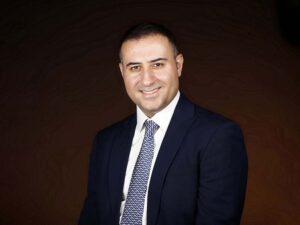AI, IoT, and genetic engineering count among the technologies
The world faces a looming crisis: land degradation is threatening food and water security, biodiversity, and economic stability, with arid and hyper-arid regions facing the most acute challenges.
In this context of urgency, global consulting firm, Arthur D. Little (ADL) has released a timely Viewpoint: ‘Pioneering a Sustainable Future for Hyper-Arid Regions’, with insight and recommendations for the MENA region.

The detailed report examines the potential for sustainable technologies to facilitate green cover growth in hyper-arid regions, with interventions ranging from AI-powered resource management and genetic engineering to the application of biochar and IoT-based sensors for land management.
ADL’s latest insights come at a critical time. Arid and hyper-arid regions, including parts of the MENA region, are characterized by water scarcity and fragile ecosystems that are disproportionately vulnerable to the growing impacts of land degradation and climate change.
Data dashboard
According to the UNNCD data dashboard for SDGs, arid and hyper-arid countries, especially in the GCC, experienced a high degradation rate increase, almost doubling from 3.78% in 2015 to 7.19% in 2019, underscoring the urgent need for innovative solutions.
Rising to the challenge, ADL’s report draws on a robust, data-driven methodology developed in-house to identify the most promising technologies for sustainably greening arid regions. The expert team used the ADL Technology Foresight framework to guide a three-phase process: technology scouting, technology shortlisting, and technology evaluation.
This painstaking process resulted in a final list of five key technologies with the potential to revolutionize sustainable land management practices in arid and hyper-arid landscapes:
AI for integrated land management. AI tools can optimize the lifecycle of land restoration and afforestation projects and are particularly helpful in hyper-arid environments.
Composting and vermicomposting. Composting relies on microbial decomposition; vermicomposting uses earthworms to accelerate the process. Both create valuable compost that improves soil health, reduces the need for synthetic fertilizers, and promotes sustainable waste management.

Powerful tools
Genetic engineering. Genetic engineering techniques, such as CRISPR-Cas9, offer powerful tools for modifying the genetic makeup of plants to enhance their resilience to the harsh conditions of hyper-arid environments.
Biochar. Biochar is a stable form of charcoal produced from the pyrolysis (heating in the absence of oxygen) of biomass. It enhances water retention, nutrient availability, and soil aeration, promoting plant growth even in challenging conditions.
IoT-based sensors for land management. IoT-based sensors offer a robust way to optimize land management in hyper-arid regions. By providing real-time data, they enable data-driven decision making for precise irrigation, optimized resource use, and improved crop yields.
In addition to identifying these five technologies, the ‘Pioneering a Sustainable Future for Hyper-Arid Regions’ report offers key recommendations that the GCC and wider MENA region can follow to combat desertification and build a sustainble future:
Establish a regional framework for sustainable land management aimed at rewarding solutions, developing regulatory best practices, and preserving the region’s native flora.
Invest in a regional green future with a focus on R&D on hyper-arid challenges, regional technology transfer, and key infrastructure.
Global initiatives
Leverage existing regional and global initiatives for collective impact by forging public-private partnerships within existing and emerging frameworks and empowering local communities through inclusive partnerships.
“The challenges presented by land degradation are both urgent and acute, but by embracing these recommendations and the technologies outlined in our study, the MENA region, and the GCC in particular, can establish itself as a global leader in combating desertification and building a sustainable future for hyper-arid regions,” stated Carlo Stella, co-author and Arthur D. Little partner and global sustainability lead.
Fellow co-author, Marielli Bou Harb, underscored the importance of collaboration in the quest for ‘greenification’, drawing attention to the Middle East Green Initiative (MGI) led by Saudi Arabia and the upcoming COP 16 of the United Nations Convention to Combat Desertification (UNCCD), taking place in Riyadh this month.
“UNCCD COP16, will allow the region to demonstrate leadership in pioneering innovative land-restoration strategies for hyper-arid environments, and the MGI offers a regional framework designed to catalyze these efforts by providing a platform for coordinated action, resource mobilization, and knowledge sharing,” concluded Bou Harb.
